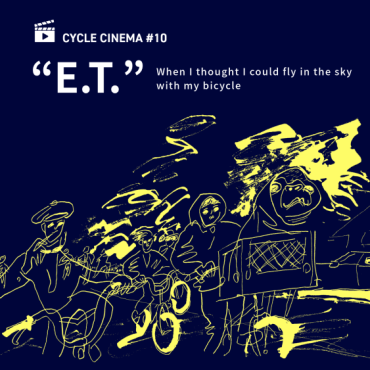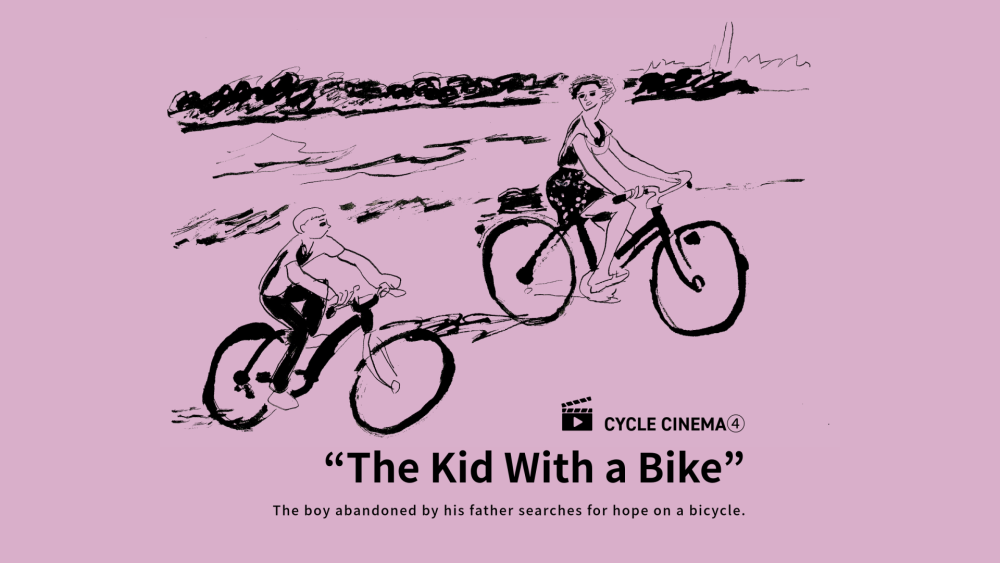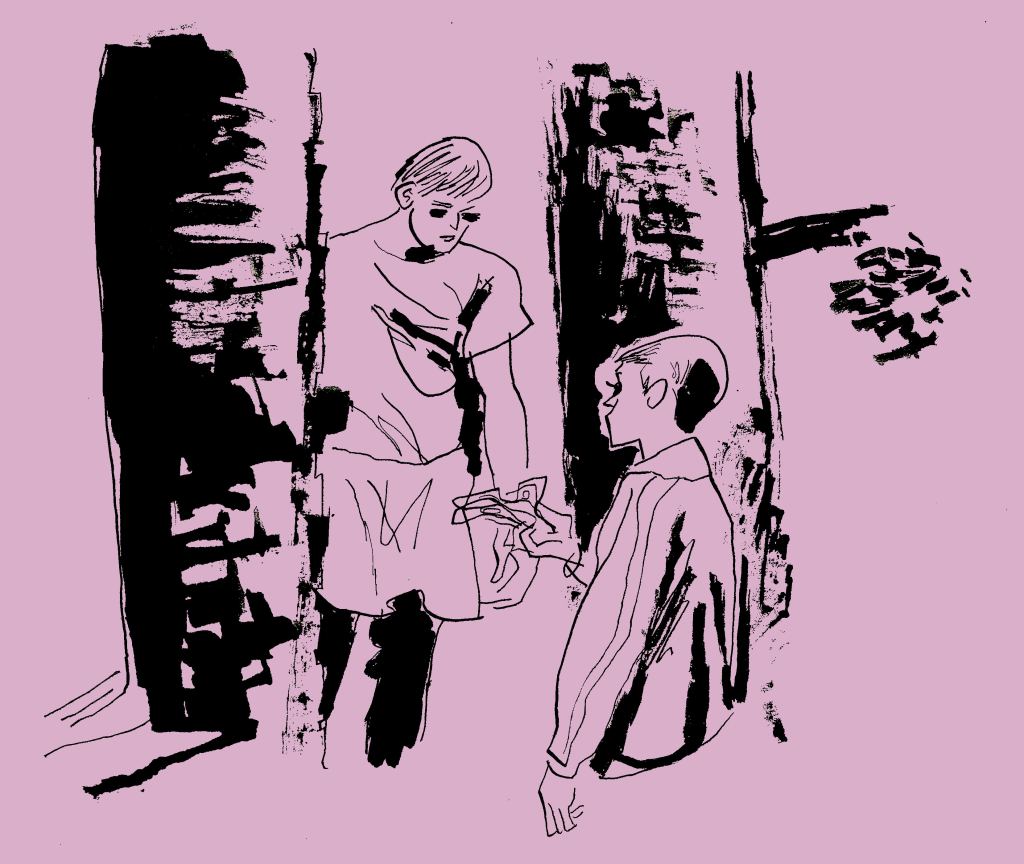
“E.T.”
When I thought I could fly in the sky with my bicycle.

“The Kid With a Bike (Le gamin au vélo)” (2012, directed by the Dardenne brothers) is, as the title suggests, a story centered around a boy and his bicycle. The protagonist is Cyril, a boy living in a Belgian foster care facility. One day, his cell phone with his father suddenly goes offline. When he contacts the apartment manager, they claim that his father has moved away. He can’t believe it. His father wouldn’t just move without telling him. Moreover, his precious means of transportation, his bicycle, is still in his father’s apartment. Cyril runs away from the facility and visits the apartment, but as the manager said, his father has already moved, and there’s no sign of the bicycle. Cyril has been abandoned by his father.
During his search for his father, Cyril coincidentally meets Samantha, who runs a beauty salon. Samantha informs him that a neighborhood kid is riding Cyril’s bicycle. Cyril exclaims, “It’s been stolen!” but, in reality, his father had sold it for money. Samantha buys back the bicycle and presents it to Cyril. With the bicycle, Cyril can cover a wider area in his search for his father. For Cyril, who has faced an unfair life, the bicycle represents hope. He must have been delighted to meet Samantha’s kindness. Cyril asks Samantha to become his “weekend foster parent,” and she agrees. This development and concept might be unconventional, something not seen in Japanese films, but the story continues regardless. Eventually, they locate Cyril’s father, but he declares, “I can’t handle the responsibility” and “Don’t come to see me anymore,” effectively abandoning his parental duties. In exchange for losing his father, the boy gradually opens up to Samantha and forms a connection with her.
Cyril’s primary mode of transportation is almost always his bicycle. In other words, his world is practically defined by the distance he can travel on his bike. However, this symbol of freedom, his chromoly mountain bike, gets stolen multiple times. In my mind, I can’t help but think, “Come on, Cyril, lock it up!” But this notion doesn’t seem to register with him. He believes he doesn’t need a lock to be free (or maybe he should use one). As expected, his bicycle gets stolen, leading to troublesome situations.
As mentioned earlier, the scope of the story is contained within the distance the boy can travel on his bicycle. Despite his beloved father being so close physically, the emotional distance between them, as “real parents,” feels infinitely far. Throughout the film, there are scenes of Cyril and Samantha traveling on their bikes. Their relationship mirrors that of a parent and child, and it gives the impression that this new family will surely work out. Cyril expresses himself not so much through words but through actions (often impulsive and involving violence). He doesn’t speak his feelings with words very often. However, in the scenes where he rides his bicycle, he eloquently embodies the feeling of happiness. “The Kid with a Bike” is a poignant yet hopeful work.

🎬CYCLE CINEMA STORAGE🎬
#01 “The Bicycle Thief”
#02 “Project A”
#03 “Shoot for tomorrow!”(origin title “Butch Cassidy and the Sundance Kid”)
#04 “The Kid With a Bike (Le gamin au vélo)”
#05 “Izakaya Choji”
#06 “Cinema Paradiso”
#07 “Kids Return”
#08 “PERFECT DAYS”
#09 “Kramer vs. Kramer”
#10 “E.T.”
#11 “Gachi-Boshi”
#12 “Yesterday”
#13 “Wadjda”
#14 “The Zone of Interest”
#15 “Anselm”
#16 “Otoko wa Turai yo”
Text_Hideki Inoue
I am from Amagasaki City, Hyogo Prefecture, Japan. I work as a writer and editor. My hobbies include hot baths, skiing, and fishing. Although I have no personal connection, I am independently conducting research on Shiga Prefecture. I prefer an active fishing style called “RUN & GUN,” which involves moving around actively instead of staying in one place. I am planning to purchase a car to transport my bicycle to adopt this style, which might seem a bit counterproductive.
Illusutration_Michiharu Saotome
Post Date:2023.09.29